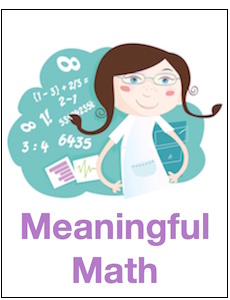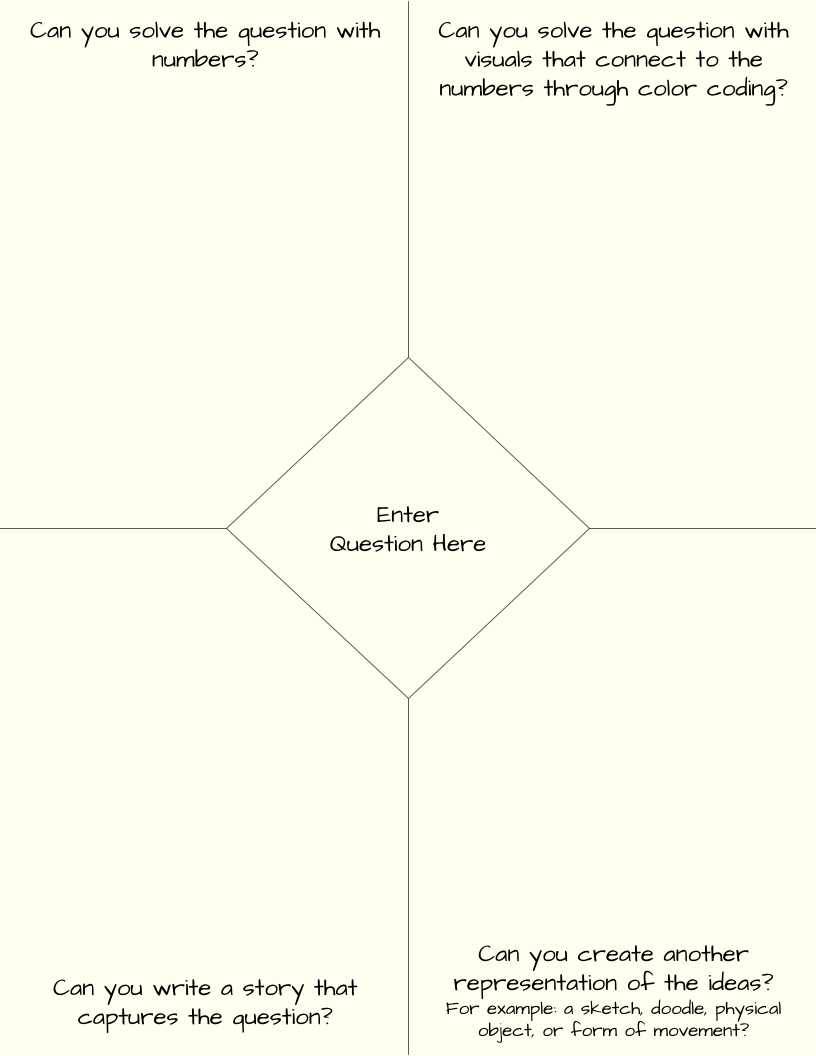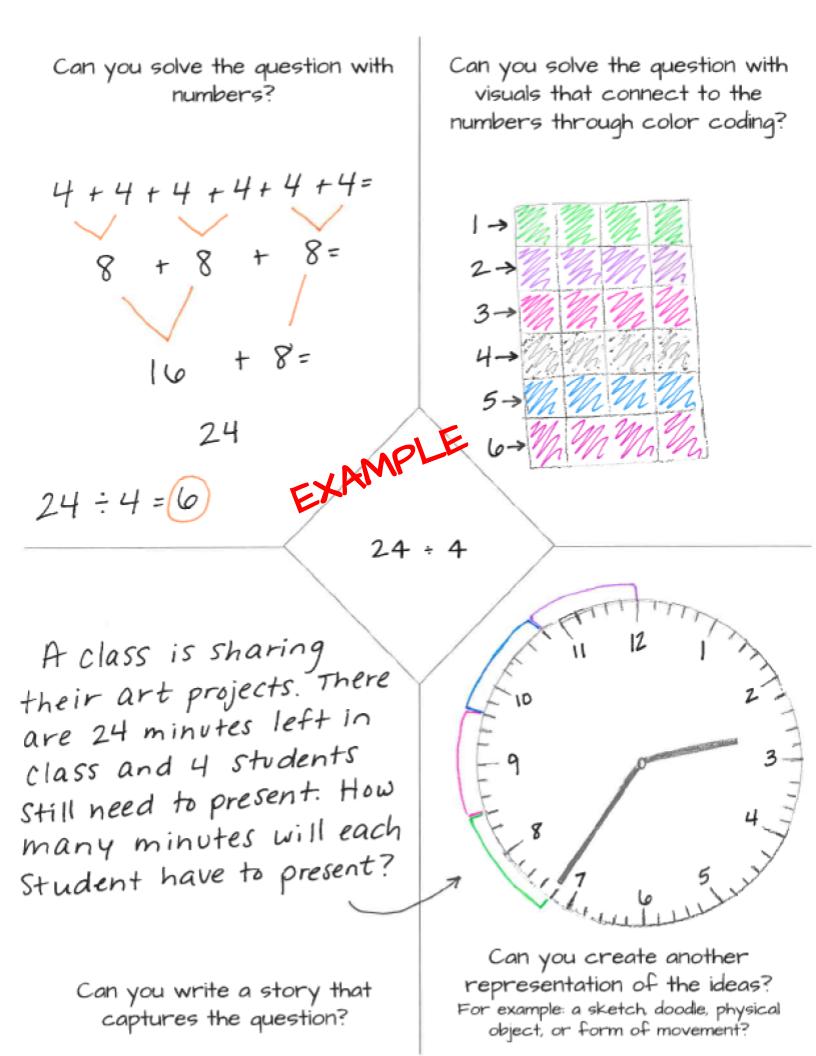Fun Math Activities To Boost Our Spirits
A MiddleWeb Blog
 These last three weeks have been very difficult for me, as I’m sure they have been for most educators. This post is mostly about how I cheered myself up with some fresh and engaging math activities – so stick around for that!
These last three weeks have been very difficult for me, as I’m sure they have been for most educators. This post is mostly about how I cheered myself up with some fresh and engaging math activities – so stick around for that!
I’m not sure exactly why these weeks in particular have seemed worse than the first few weeks of school. Maybe because in August I was just glad to be teaching again. It was stressful, but it was a relief to be back in the routine.
Lately I’ve become discouraged because there so many activities I would like to do with my students, but I can’t because of the constraints of social distancing and virtual learning.
When I started dreading Monday mornings, I knew I needed something to reenergize me and bring some joy to my teaching. (There’s something about having an activity to try that makes me so excited to come to work!)
I ended up trying three activities. One of them was new to me; the two others were activities I’ve done before, but it had been awhile.
I realize everyone’s teaching situation is different right now. I have about 60% of my students face to face, and 40% of my students are virtual – a hybrid model. The activities I used can be adapted for face to face or virtual learning and can be done while social distancing.
Diamond Paper
I actually learned about this when Lenny VerMaas commented on my blog post a couple of months ago and suggested I try it. I’d been meaning to do so for several weeks, and after giving my last test I decided it was time.
It’s called diamond paper because there is a diamond in the middle of the paper in which the problem is written. Lenny describes the purpose for the activity this way:
When students are given worksheets with a series of almost identical questions to work through, they miss opportunities to strengthen their brains. A better practice is to take a small number of questions and approach them in different ways. The diamond paper template asks students to solve a mathematical problem in four unique ways. This can be used both as a formative assessment and as a creative center activity or meaningful homework assignment.
He also shared his template to show the setup (click):
For my classes, I had students take out a piece of their notebook paper and fold it in fourths, then make a diamond in the middle of the paper. The problem I want them to work will be written inside the diamond. The paper is then divided up into four quadrants. Each quadrant instructs students to work the problem in a different way.
The four methods of working on the problem are:
- with numbers
- using visuals connected to color coding
- telling a story
- providing another representation (for example: a sketch or doodle)
You could give F2F students a print copy of the diamond paper that includes the instructions and the problem. I did not do that because I try not to hand out papers when I can avoid it.
The problem I wanted them to work was from our last test, and it was one a lot of students missed. The problem involved using the quadratic formula to solve an equation in which the solutions are imaginary. I think students benefitted the most from using color coding and telling a story related to the problem.
It was really interesting to see many of my “strong” students struggle with creating a story. In the past, I’ve hesitated to do activities like this because the students don’t always get the math right when they try to connect it to a story. But I realized it was good for my students to think about the problem in a different way. In fact, one student said, “I never thought about using math to tell a story.”
Some of the stories the students came up with were really original. One student made up a tale around the quadratic formula itself, making personalities for a, b, and c to help explain how the formula worked. I can only hope that that will stick with her and help her remember the quadratic formula after she leaves my class. And the way some of them chose to color code the quadratic formula was really good; I’ll probably borrow some of their ideas for next year!
Here’s one of Lenny’s completed examples (click):
You can access Lenny’s templates in Google Slides.
Kahoot! at a Distance
I know most everyone has heard of and played Kahoot. In fact, I stopped using it in my classroom for a while because my students were playing it so much in other classes. However, when I learned that Kahoot has an “assign” feature that allows you to assign a Kahoot challenge for students to play at home, I decided it was time to revisit. Here are two resources I discovered:
How to Kahoot Remotely (at Unpacked Education)
Student-Paced Kahoot Challenges (at the Kahoot YouTube channel)
Kahoot in AP Classes?
In the past I have avoided using Kahoots in my AP classes because I didn’t think I had time given all the topics we have to cover. This year I decided to play Kahoot in my AP Statistics class and we had so much fun! It was a unit that was very heavy on vocabulary, and the Kahoot really helped me see what terms the students understood and which ones they didn’t. At the end of the class, one student said “that was fun, thanks!” I see now it’s well worth the time.
Playing the same Kahoot more than once?
In my Algebra 2 with Trig class, we played a Kahoot and the students really struggled with it. The next day they asked me if they could play it again. I almost never play the same Kahoot more than once, usually because we need to move on to the next lesson. But since they asked, we did play again.
It worked out really well. Some of the students understood the questions better the second time around, and I could hear them explaining and helping other students who were still struggling. It also leveled the playing field a little bit. Some students who don’t typically “win” made it to the top five on the second try. It worked so well I plan to do it again.
Which one doesn’t belong (WODB)
I hadn’t done this activity all year, so I decided to try it in my Algebra classes. I put up four graphs (all parabolas) on my Smartboard and asked students to decide which one didn’t belong and to do it without discussing it with their classmates. (Some samples)
My goal was to help them notice the key features of parabolas. I picked four graphs so that students had a number of options for deciding which one didn’t belong. I wanted them to see that parabolas can open up or down, and that they can cross or touch the x-axis at one point, two points, or not all. (I think this activity would work well in any math lesson where you want students to notice similarities or differences.)
It was very difficult at first. Students didn’t understand that there wasn’t just one right answer. When a student would share their answer, the other students thought their own answer was wrong. Through trial and error I finally worked the kinks out and by eighth period we had a good discussion.
After students realized there could be multiple correct answers, it became more of a conversation, which is what I wanted. I’m anxious to try it again now that my students understand how it works.

Maintaining Joy in a Difficult Time
My students depend on me to be cheerful and happy. In fact, they are quick to notice any mood change on my part. If they sense anything, they will ask me, “are you ok?” or “are you mad?” Especially right now, they need me to be upbeat and consistent.
I have to try to maintain that optimism, and I will admit that is a challenge. But having some new (or not so new) activities to try gets me excited and energized to come to work. I figure that’s good for everybody!
If you have any activities, strategies, games, etc. that you are excited about, please share them in the comments below. You’ll be cheering up a lot of math students and at least one math teacher at my school!































Hello Mrs. Russell,
My name is Kam Majewski and I am a current student at the University of Northern Iowa. I am studying elementary and middle level education with focuses in math and science. I have wanted to be a math teacher since as long as I can remember and one of the biggest things I hear is how much math is hated. This makes me sad given that I love math and I want others to have that same joy.
Because of this I have always thought about ways that I can make math enjoyable. I loved reading this post not only for inspiration but also see it as a resource for the future.
I was wondering if you had any advice, other resources, or activities you are willing to share with me.
Thank you so much for what you do,
Kam Majewski
Kam,
Here are two resources that might be helpful. This link leads to Michelle Russell’s complete blog archive here at MiddleWeb – she’s written frequently about helping students learn to like (if not love) math!
You might also want to read the two most recent posts by grades 5-6 math teacher Mona Iehl, written with up and coming math teachers in mind. One looks at math anxiety, the other at warm-up activities that engage reluctant math learners.